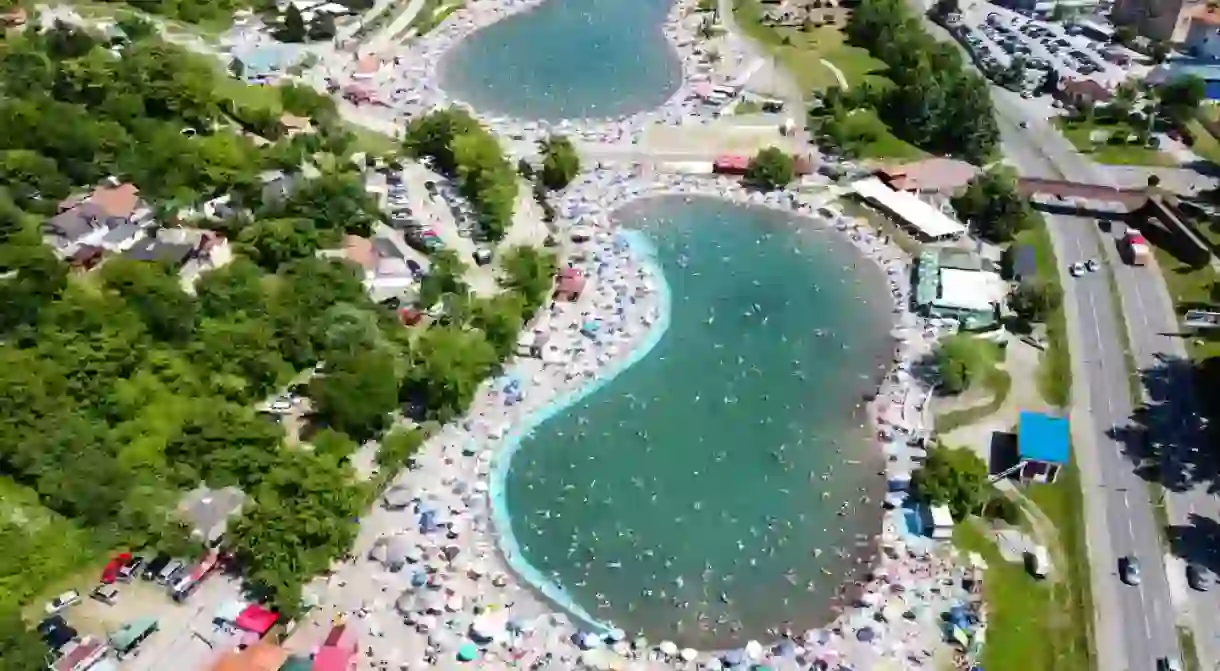The 10 Best Things to See and Do in Tuzla, Bosnia

Tuzla, in northeast Bosnia, is off the tourist trail and a hub for WizzAir flights into the country. Adventurous travellers have the opportunity to explore the unlikely serendipity of this industrial city. After becoming a major Ottoman town because of the abundance of salt, the population boomed to one of Bosnia’s biggest. Today, you’ll find a modern university city with elements and architectural styles from Ottoman, Austro-Hungarian and Yugoslavian influences. Here are 10 things to do in Tuzla.
Planning a trip to Tuzla? Be sure to book ahead onto a top-rated tour of the area. Whilst you’re there, why not explore more of Bosnia on a highly recommended tour of the country?
The Old Town:
Bosnia has lots of charismatic old towns with a combination of Ottoman and Austrian styles. Tuzla is no different. As you walk through the stone streets, soak up and enjoy the atmosphere and have a coffee in one of the little cafés. Unfortunately, due to erosion from salt mining, sinkholes developed below the old town. Parts have collapsed on themselves. Tuzla’s historical centre may very well have an expiry date in the not so distant future.

Korso is the main pedestrianised street lined with colourful Austro-Hungarian buildings that join to the old town. Locals, students, and a few tourists often come here to shop or relax in one of the outdoor cafés.
Turalibeg’s Mosque:
Turali Beg was Tuzla’s Governor and urban development planner in the 16th-century under the Ottomans. The mosque was just one of his many commissioned buildings. Turalibeg’s Mosque is somewhat unique in Bosnia and the Islamic world. What makes this so special is the stone minaret and a pyramid-shaped roof. Inside, a large prayer chamber has whitewashed walls, and the exterior lighting makes for a beautiful sight in the early evening.
Because of the mosque’s location on silt, the building began to sink and underwent restoration in 2007. The architects gave the new building a modern appearance while retaining the original features. Turalibeg’s Mosque is a national monument of Bosnia and an incredible attraction for fans of Ottoman architecture.
The National Theatre:
Tuzla’s National Theatre is a famous monument and cultural centre, which opened in 1949 to replace an earlier 19th-century Austrian one. Theatre season lasts from early September until July, which is longer than others in Bosnia and around the globe. Shows range from performance arts to dramatics and concerts.
Kapija:
On the northern side of Tuzla’s old town at the end of pedestrianised Korzo is Kapija, a large green gate with a beautiful exterior built by the Austrians. But, towards the end of the Bosnian War on May 25 1995, or National Youth Day, a tragic event took place. A shell landed killing a total of 70 people. A memorial marks the spot.

Orthodox Cathedral:
The Serb Orthodox Cathedral, or Cathedral of the Dormition of the Mother of God, is an onion-domed church dating back to 1926. The exterior is grand and photogenic while the interior is of another world. A three-level iconostasis dominates the back with colourful pictures of saints decorating the walls.
The Lakes:
Tuzla is home to three artificial lakes and beaches, providing residents with somewhere to relax on a hot summer’s day. Pannonica, or the main lake, has better beaches and a series of cascades and swimming areas. Modrac and Bistarac have lakeside hotels, restaurants and cafés.
Opening hours: From 8 am to 8 pm daily.

Saints Peter and Paul Franciscan Monastery:
Saints Peter and Paul is another symbol of Tuzla’s diversity. The Catholic monastery stands proudly in a Bosniak, or Bosnian Muslim majority city, that’s located near a Serb Orthodox Cathedral. You can find the monastery near the old town on the northern side of the river. Tourists can enter the library and gallery inside.
Dzindic Mosque:
Have you ever seen a mosque that looks like a house with a minaret made from timber? Probably not. Tuzla’s Dzindic Mosque is about as peculiar as you can get. White-washed walls and a roof from wooden shingles give the appearance of a house rather than a religious building. For this reason, the Mosque is one of Tuzla’s most photographed spots.
The Eastern Bosnia Museum:
If you want to learn about the rich and complicated history of Eastern Bosnia, check out Tuzla’s Eastern Bosnia Museum. After opening its doors in 1947, the museum has accumulated approximately 50,000 exhibits covering 6500 years of regional history. You’ll see and learn about archaeological and historical importance, along with various ethnographic displays and local art.
Opening hours: 8:00am to 3:00pm from Monday to Friday. Closed on weekends.
Archaeological Park:
Archaeologists discovered a Stone Age settlement near Tuzla in the 1950s and recreated the buildings in an archaeological park. You’ll find nine huts that are said to represent the original ones that are several thousands of years old in the south-eastern corner of Pannonica Lake. Although they’re not original, the buildings give a fresh perspective on Tuzla’s long and rich history.













